If anyone can help with identification of the men in these photos please comment below.
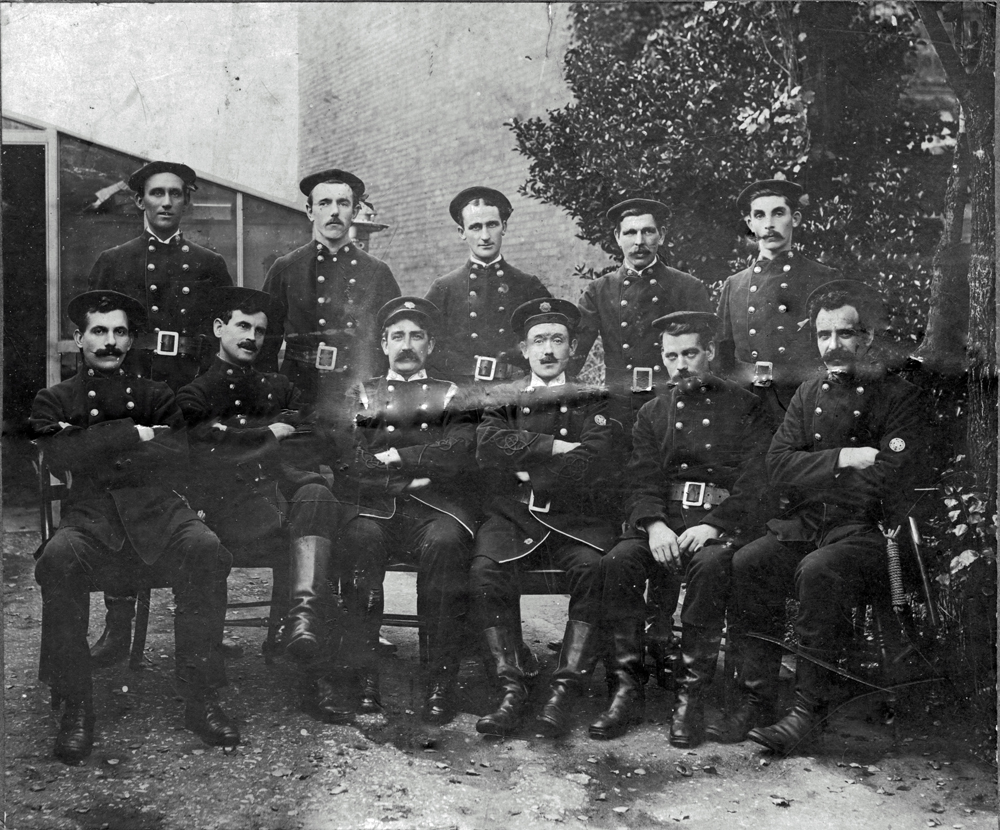
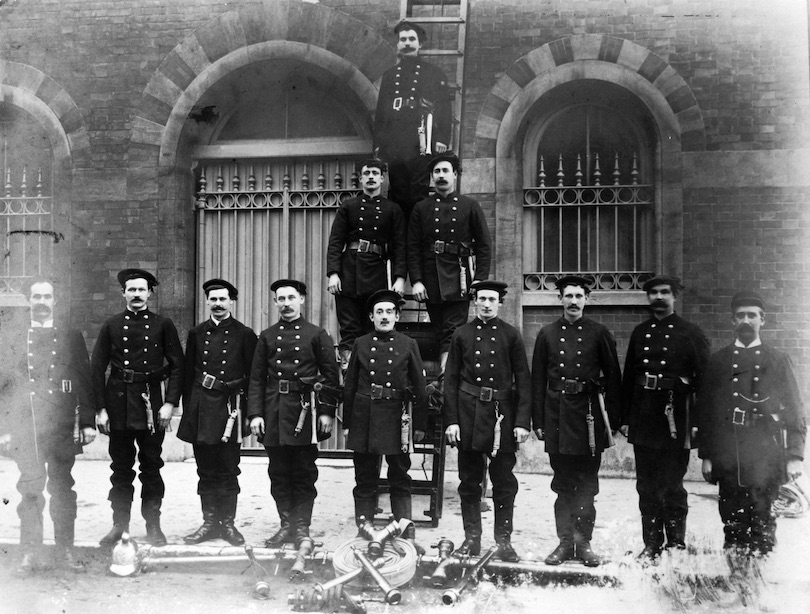
Jack Wynn joined the service in 1928 following his father and two uncles. He completed 42 years of service on his retirement in 1970. He spoke about his experiences to Ivor Punnett of the Burnham & Highbridge Weekly News in 1991:
“Dad was in the fire brigade for years and so were his two brothers. And the day I was 18 I went along and joined as well. Those early days were lots of fun, even though sometimes it was a right caper. The only machines we had were two handcarts and a wheeled escape ladder with a canvas chute.. If there was a shout we all had to rush to the station, grab the carts and set off hell for leather through the streets. And sometimes when we coupled up the hoses and turned on the water nothing came out of the hydrant because the pressure was too low. Then we had to send someone dashing off to ring Brent water works and ask them to increase the pressure in that area so we could fight the fire.”
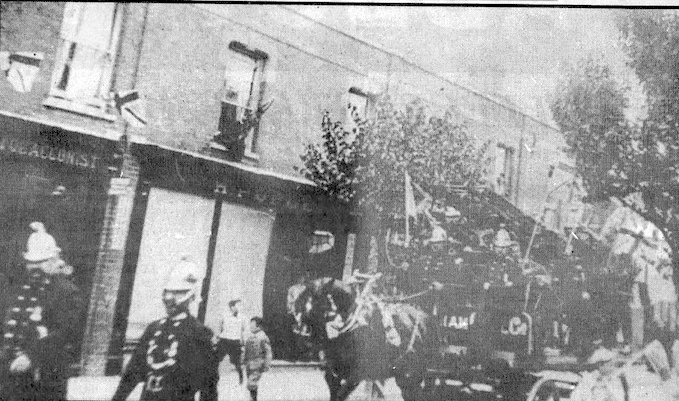
“The Town Council could require one unpaid test run each year. “When that came along we sometimes used to rush the wheeled escape to a local girls’ school and get them all sliding down the chute, and how they enjoyed the fun. All the men had a little FIREMAN sign above their front door so they could be given a shout by a colleague if they didn’t hear the bell at night. During the day a bell outside the town hall was rung and the man who did that job was paid two shillings. Firemen were paid 3/6d for the first two hours on duty and you could be out all night in the pouring rain for 7/6d. But people didn’t worry about the money then, they joined to be of service to the community and for the interest and companionship.”
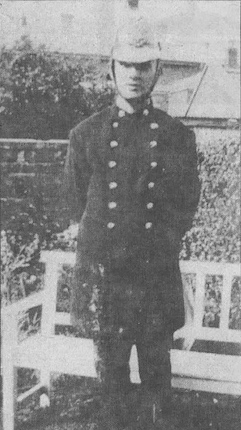
“Our uniform consisted of a three-quarter length coat, brass helmet and stout hip-length rubber boots. But if you ran to a fire and didn’t have time to get your uniform the council wouldn’t pay anything if you burned your coat or tore your trousers. In those days the officer-in-charge was called the Captain and when I joined the captain was the local blacksmith Henry Welland. We always had 12 men at a turnout and it was fire brigade policy to enlist men of all trades – I was a carpenter – so that at a house fire they knew how to tackle different jobs. If we had a big fire we used to call for the ‘steamer’ from Weston. This was a large steam operated pump ut it took so long to get here we only called for it on a major job.”
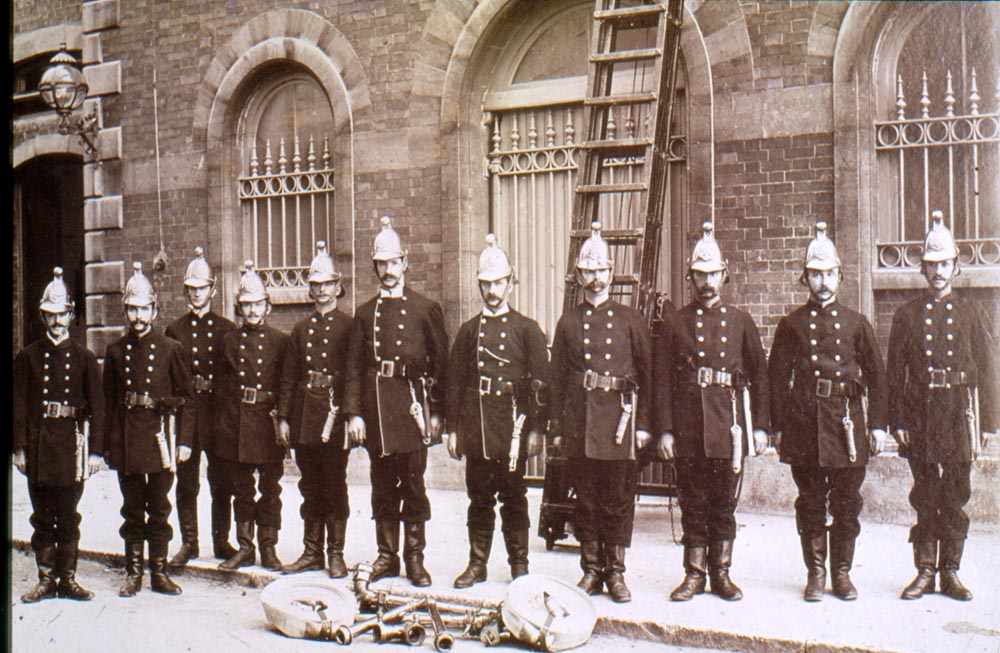
“The worst blazes we had to tackle were rick fires because the loose hay would blow about all over the place and you could end up with your hands a mass of blisters. We also had a lot of chimney fires started by women putting blazing paper up the fireplaces to burn out the soot. But this was a daft thing to do because the fire could get out of hand and all the brickwork could be cracked. Then they made it an offence to start a chimney fire deliberately and brought in a fine of 7/6d. In the country some people used to fire an old muzzle loader up the chimney and then it was soot, soot, soot all over the inside of the kitchen.”
I remember the first motorised fire engine we had, which seated four men on either side of the body. There were brass hand rails on each side and it was a desperate business on a cold, wet or snowy night rushing to some fire at two in the morning.”
During WWII there were major changes to the service and at one time Burnham had 97 Auxiliary and National Fire Service members. Jack became a member of the NFS and saw a lot of action during the bombing of Bristol and Exeter and also in London during the V1 & V2 attacks of the last two years of the war.
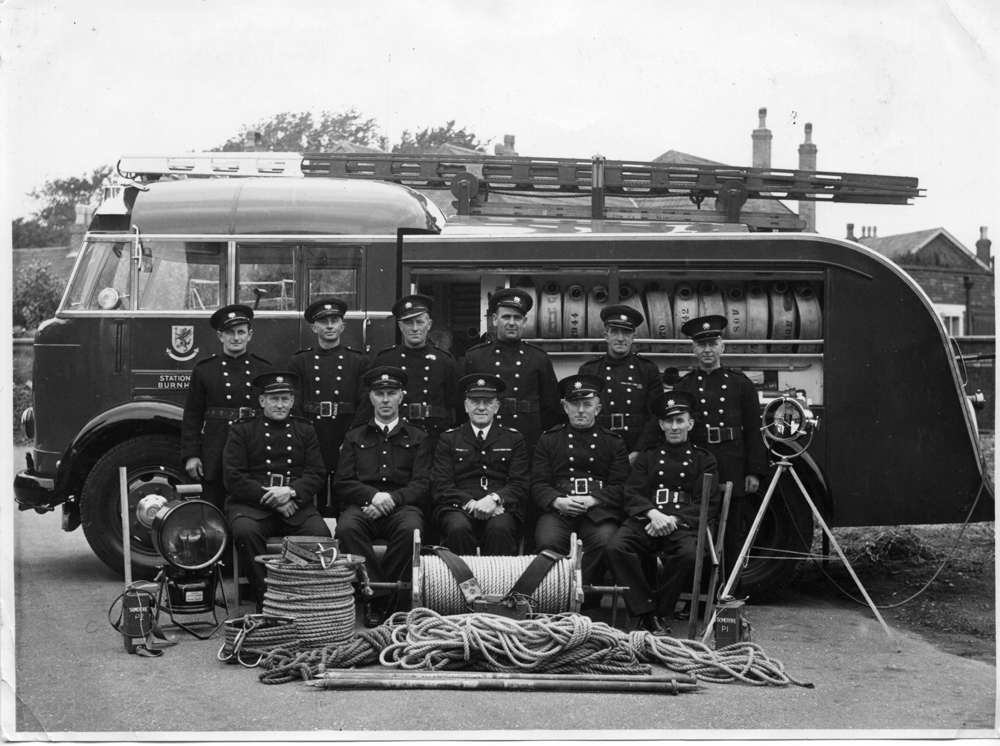
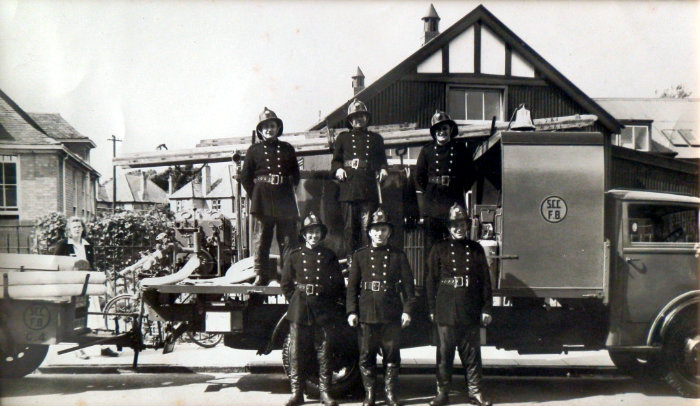
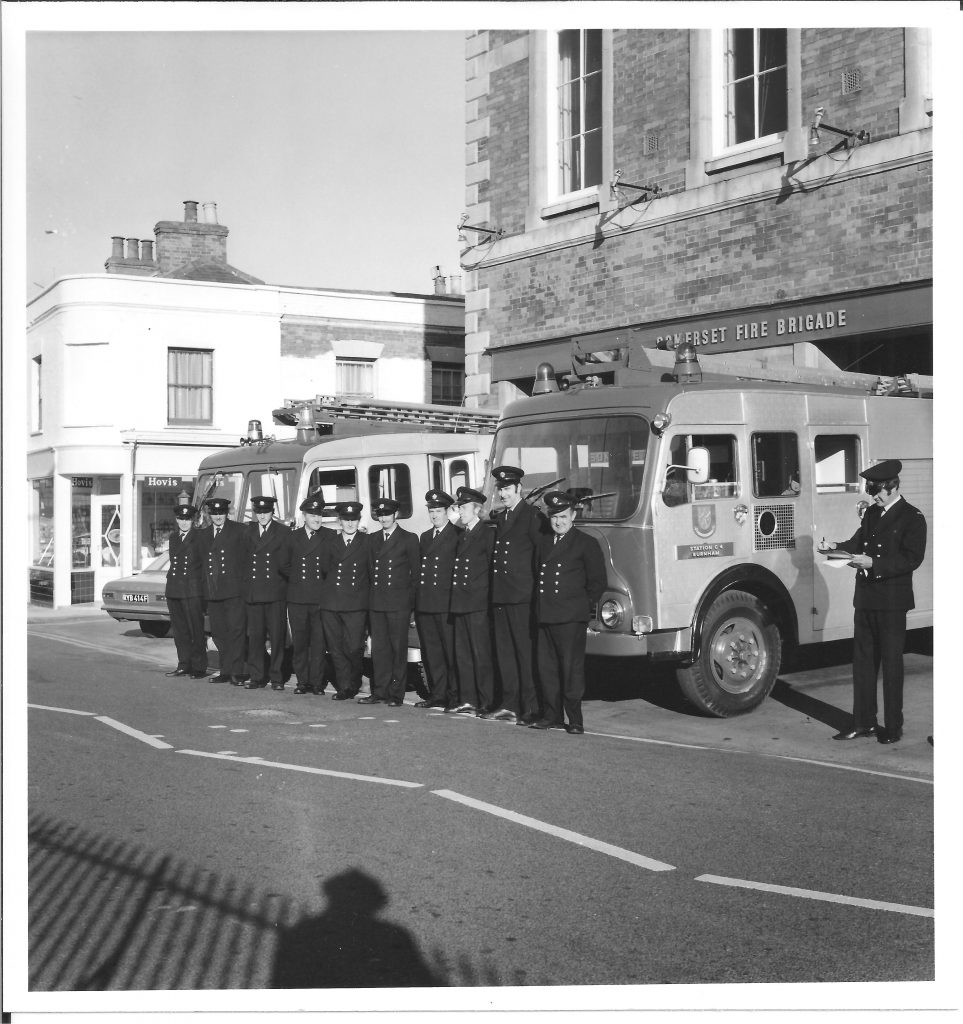
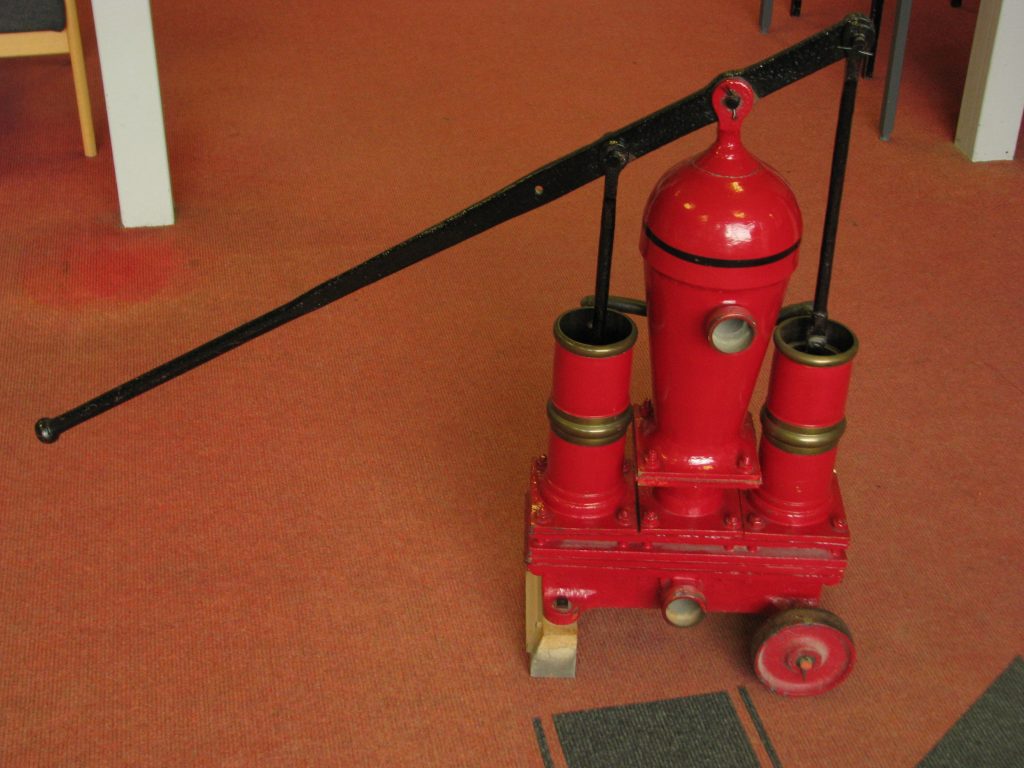

FIRE STATION
The Princess Hall was originally constructed in 1868-69 as a market hall and town hall. Originally it is believed the east end was open to the street for access to the market. At some point this end was enclosed (see Princess St) and it was developed for use as a fire station. From the picture at the top of the page it can be seen that this occurred some time before the installation of the folding doors (below) which many of us will remember.
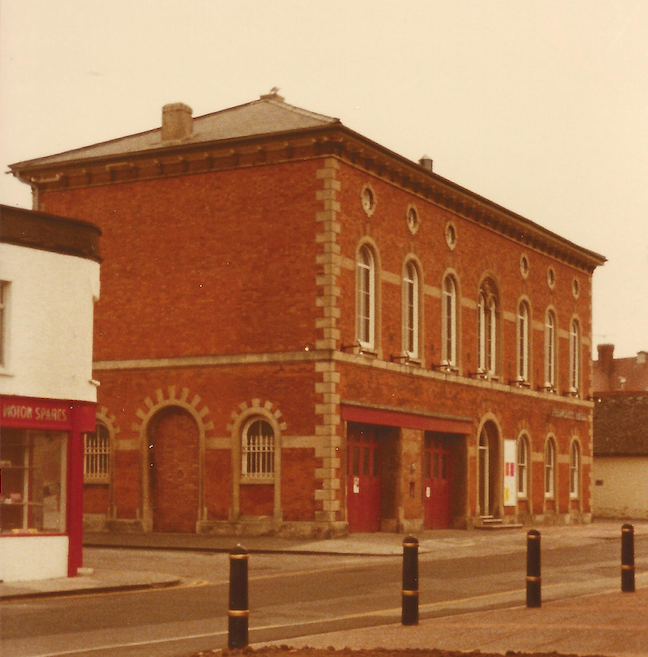
FIRE AT POPLE’S YARD
In 1913 there was a large fire at Pople’s builders yard in the centre of Burnham Town behind the High St premises now occupied by Boot’s .
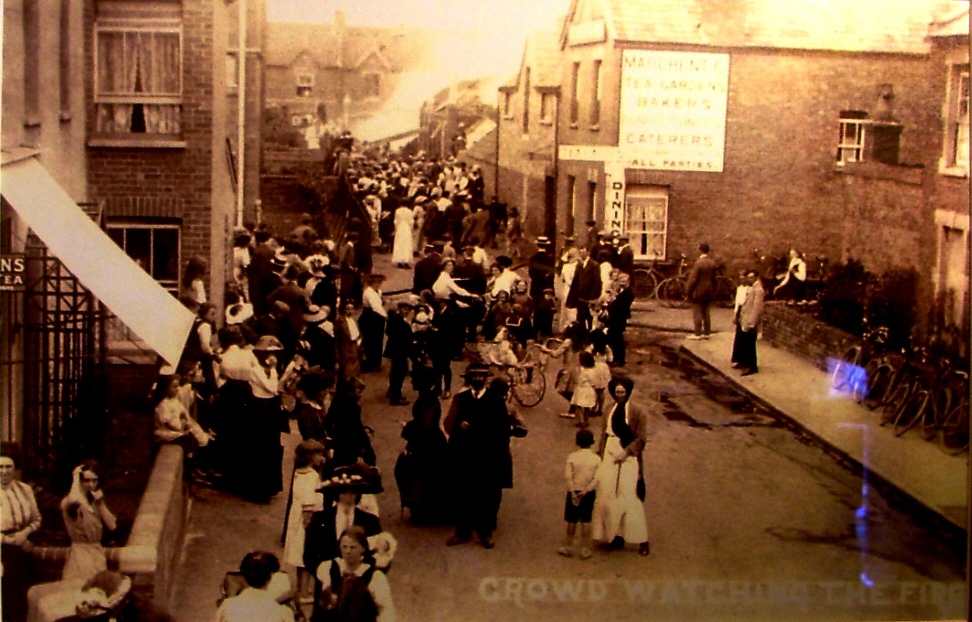
Above is a picture of a crowd watching the fire from the Technical St end. Below are pictures of the fire fighters in action and the aftermath. Note the C.P. initials on the cards referring to Charles Pearson, local photographer.
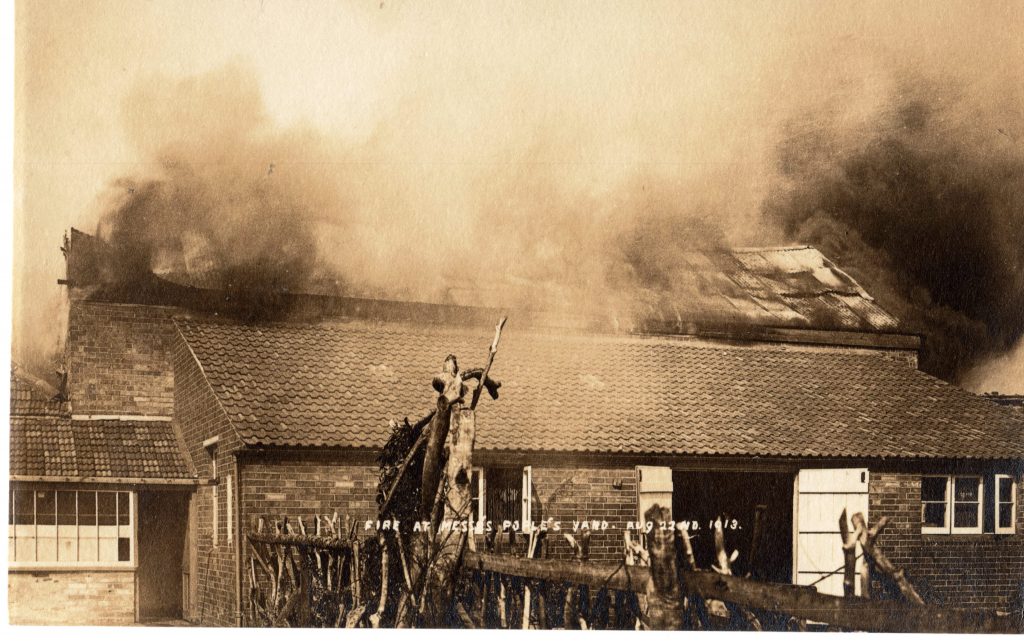
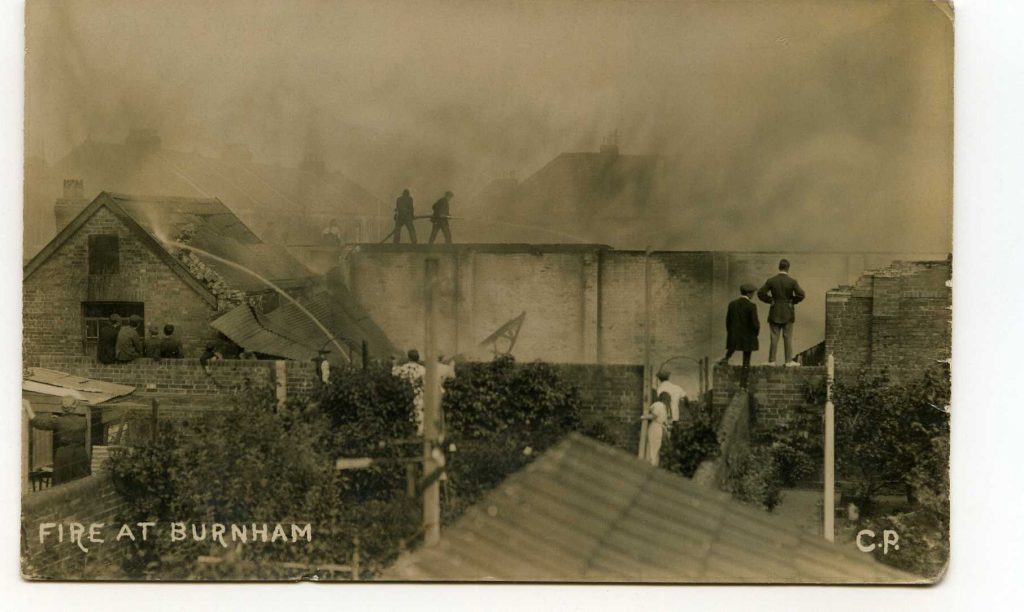
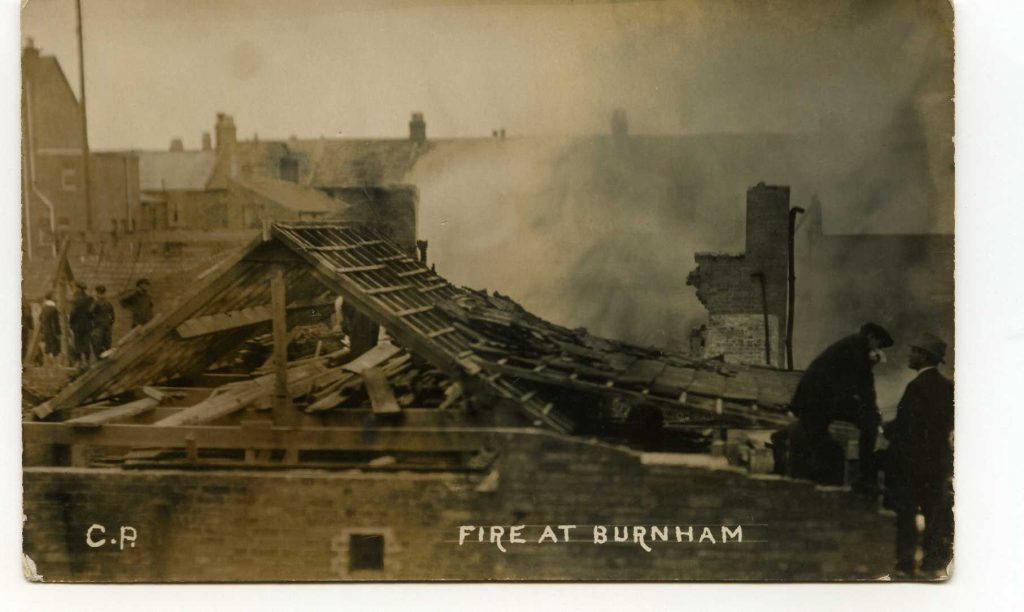
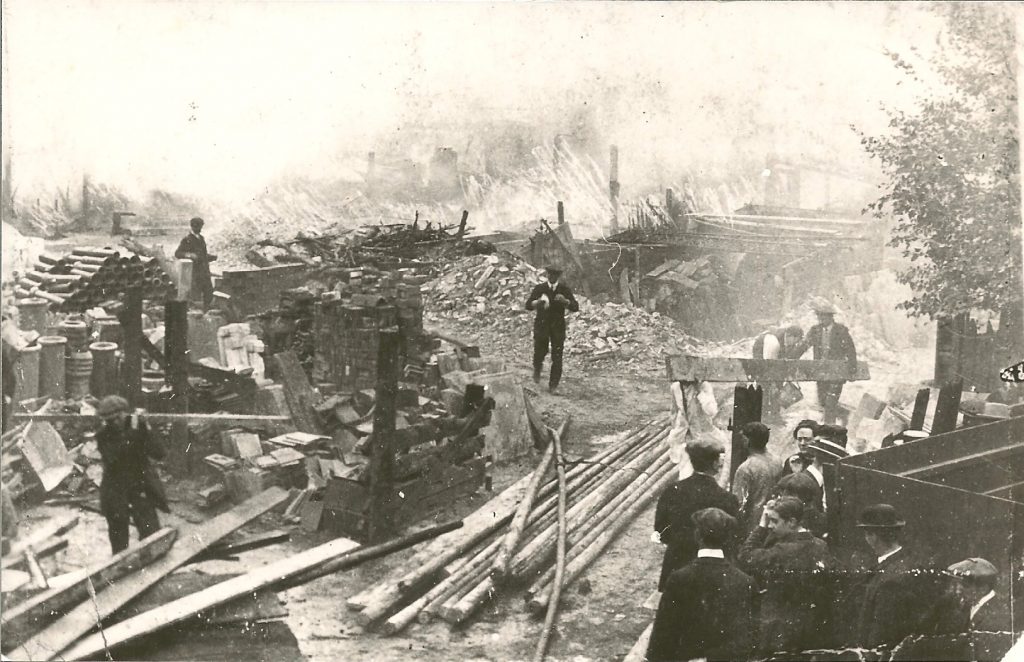
There is anecdotal evidence that in the photo above the man in the centre has a chicken under each arm. He was about to give these to a couple of young lads to put in a nearby garden to prevent their escape. Pople’s building materials can be seen scattered around.
The appliances used at this fire may well have been similar to the one below (photo undated).
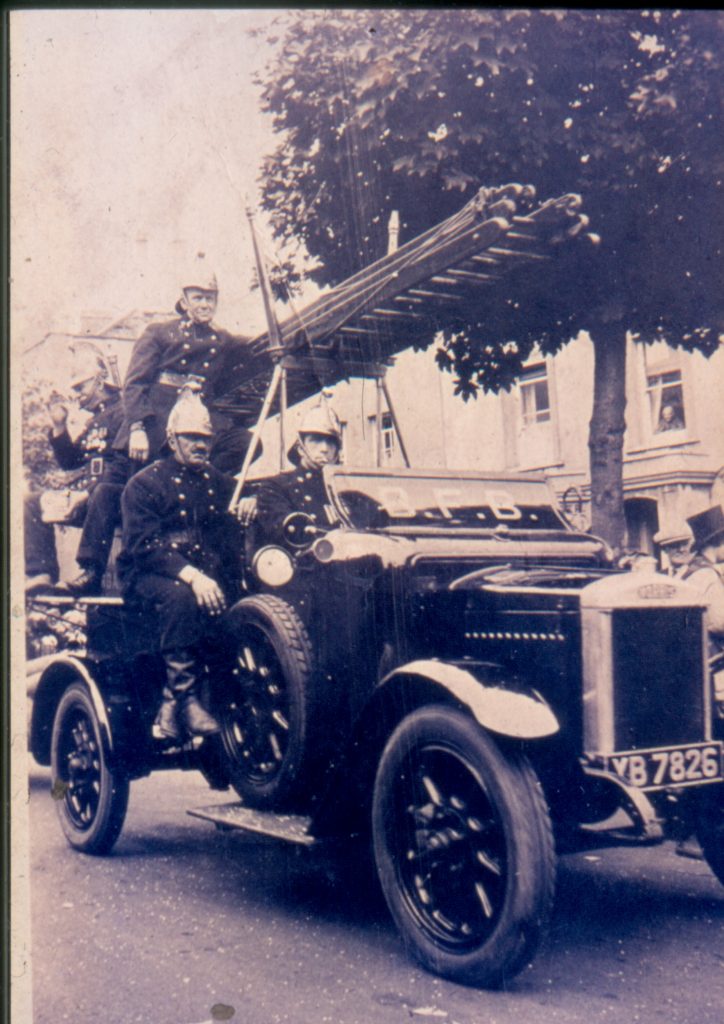
CLIFF RESCUE
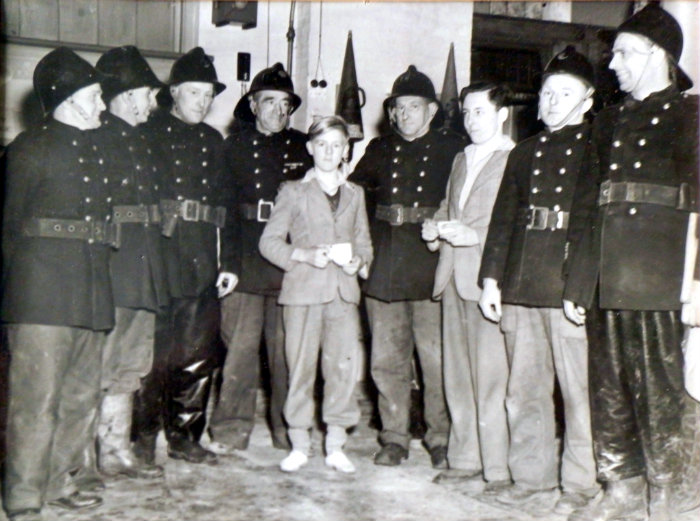
On Tuesday 15th April 1952 14 year old Highbridge boy Terry Fisher was rescued from the cliffs at Brean over 70 feet above the beach. Terry had been walking with his friend Adrian Porter when he spotted a gulls nest on a spur of rock about 80 feet above the sand. He attempted to climb to the nest but became stuck in a crevice about 10 feet below it unable to move up or down. Adrian sought help from a farmhouse about half a mile away and P.C Pollard of Burnham Police was sent. Being unable to reach the boy himself he sent for the Fire Brigade. Terry was eventually hauled up the 200 feet to the top of the cliff in a fireman’s chair after the P.C and three of the firemen climbed down to him. ALthough he had been unabe to sit and had to cling to the rock for 3 hours he was described as being little the worse for his experience.
(Report from Burnham on Sea Gazette and Highbridge Express 18th April 1952)

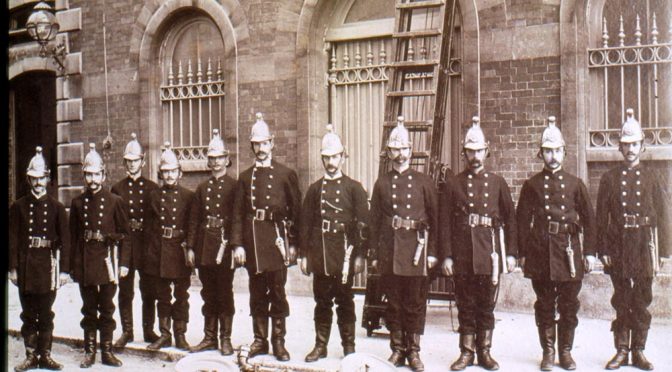
My grandfather John Henry (Jack) Forbes is pictured.
1948: centre front
1950s: front right
So pleased and proud to see the pictures of the Burnham on Sea Fire Brigade. With My…. Father Fred Holt . Thank you. Glenis Holt ….
So Proud to see the pictures of the Burnham on Sea fire Brigade. With My Father Fred Holt. Thank you Glenis Holt …
Thanks for your comment Glenis, glad you have been pleased by the page. Which picture does your father appear in? Do you have any other names?